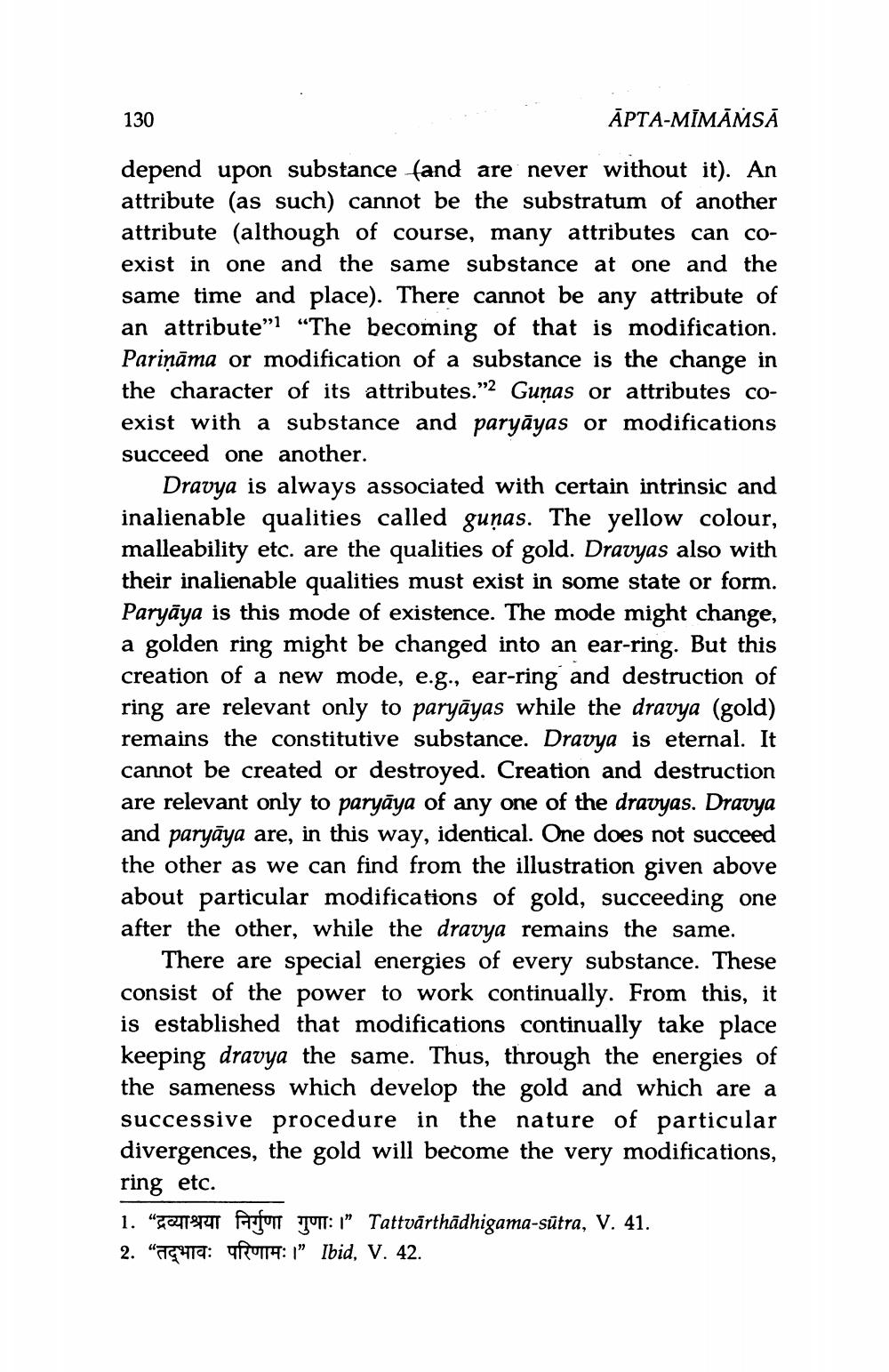________________
130
ĀPTA-MĪMĀŃSĀ
depend upon substance fand are never without it). An attribute (as such) cannot be the substratum of another attribute (although of course, many attributes can coexist in one and the same substance at one and the same time and place). There cannot be any attribute of an attribute”! “The becoming of that is modification. Pariņāma or modification of a substance is the change in the character of its attributes.”2 Gunas or attributes coexist with a substance and paryāyas or modifications succeed one another.
Dravya is always associated with certain intrinsic and inalienable qualities called guņas. The yellow colour, malleability etc. are the qualities of gold. Dravyas also with their inalienable qualities must exist in some state or form. Paryāya is this mode of existence. The mode might change, a golden ring might be changed into an ear-ring. But this creation of a new mode, e.g., ear-ring and destruction of ring are relevant only to paryāyas while the dravya (gold) remains the constitutive substance. Dravya is eternal. It cannot be created or destroyed. Creation and destruction are relevant only to paryāya of any one of the dravyas. Dravya and paryāya are, in this way, identical. One does not succeed the other as we can find from the illustration given above about particular modifications of gold, succeeding one after the other, while the dravya remains the same.
There are special energies of every substance. These consist of the power to work continually. From this, it is established that modifications continually take place keeping dravya the same. Thus, through the energies of the sameness which develop the gold and which are a successive procedure in the nature of particular divergences, the gold will become the very modifications, ring etc. 1. "Jupe parfon TOM:1" Tattvārthādhigama-sūtra, V. 41. 2. "75417: 11:1” Ibid, V. 42.




